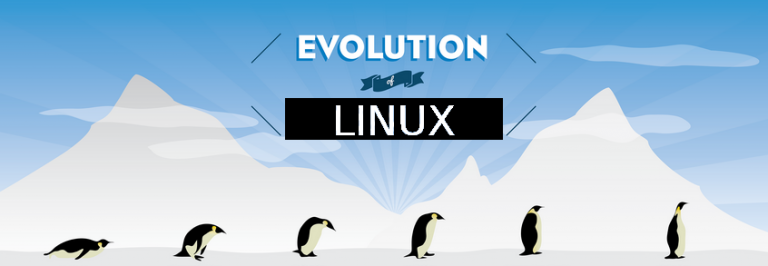Linux VPS Server's History And Basic Steps
The origins of the Linux VPS server may be traced back to 1969 when two programmers named Kenon Thompson and Denis Ritchie collaborated to create Unix. Following that, in the 1970s and 1980s, a slew of Unix-based initiatives sprung up. However, in 1991, a really remarkable event occurs: Linus Torvalds synthesized all of his previous knowledge and resources into a single core.
Following that, between 1992 and 1995, a number of notable Linux VPS distributions appeared, including:
- Red Hat
- Debian
- Slackware
Linux 1.0.0 was published on March 14, 1994, and it had 176,250 lines of code. This is where the history of system development began. The most active distributions were those based on Red Hat, and in 1996 the kernel version was modified, resulting in the appearance of variants such as Yellow Dog, Red Flag, TurboLinux, and others.
One of the most significant moves was taken between 2000 and 2005. The popularity of this operating system has exploded in the last five years, and many new Linux PCs are starting to appear. The kernel was improved further, additional programs were added, and the first live distribution was released. However, the most significant event during this time was the release of the Linux kernel 2.4, which included support for PC cards, Bluetooth, RAID, USB, and other features.
The Ubuntu distribution took off and gained in popularity after that, in 2006. This is one of the most popular desktop distributions as well as an operating system for managing virtual and dedicated servers at the moment.
Evolution Of Linux VPS Server
Every year on August 20, the whole Open Source community across the world celebrates the Linux operating system’s birthday. Linux has developed greatly during the course of its development and modernization (about 20 years). These findings may be seen in the fact that Linux is now the primary operating system on nearly all supercomputers throughout the world, accounting for around 80% of all supercomputers. Linux is used by two-thirds of all web servers on the planet.
Every year on August 20, the whole Open Source community across the world celebrates the Linux operating system’s birthday. Linux has developed greatly during the course of its development and modernization (about 20 years). These findings may be seen in the fact that Linux is now the primary operating system on nearly all supercomputers throughout the world, accounting for around 80% of all supercomputers. Linux is used by two-thirds of all web servers on the planet.
- A large number of graphical environments are available. Unlike Windows, this operating system comes with a large range of graphical environments, such as GNOME, KDE, LXDE, XFCE, and others. Depending on your resources, you have a variety of options.
- System for storing files. There are no such things as drives C and D in this OS. There is just one huge file system, which starts with the letter /. It is possible to interact with the operating system’s kernel and change files as if they were in a normal setup. It makes working with files and directories a lot more convenient.
- Updates and support. Clients frequently utilize Ubuntu, Debian, and CentOS to work with VPS; as a result, developers and engineers take this into consideration and give regular upgrades to their distributions. As a result of its widespread use, there are currently several forums and groups where you may ask questions, as well as information sources.
- Security. Developing a new form of virus for Linux is currently unprofitable. The majority of Linux viruses are aimed at servers and are meant to be used manually against specific targets and programs. It will be tough to design viruses that will function everywhere because of the low popularity (today, compared to Windows), as well as the wide diversity of distributions and their configurations.
Behind The Scenes Of Linux's Mobile Era
A number of mobile operating systems are beginning to be built on Linux, in addition to the fact that this operating system is gaining popularity in the early 2000s. Nokia’s Maemo OS, which gained popularity in 2005, was based on the Debian distribution and replaced a substantial portion of the GNOME graphical interface.
Moreover, an event that happened in 2003 played a considerably more significant effect than the establishment of Maemo OS. Then, in California, a business named Android Inc. was founded. The operating system used exclusively for digital cameras was the product on which the firm first focused its development and strategy. This is how the Android operating system, which we are all familiar with today, came to be. The Linux kernel is now found on every Android smartphone and tablet.
The Reason Why Linux Is The Best Choice
This operating system has demonstrated to the world the excellence and beauty of adopting open-source projects. Because it is open-source, it enables the development and upgrading of subsystems to guard against and improve the operating system. This confers a distinctive distinction – the world’s most secure operating system!
Because Linux is fully free, it is simple to start a small business. When it comes to Windows, purchasing a licensed version of antivirus software is a must. For example, you may not have Office installed after purchasing a Windows Pro license or another edition, which is an extra issue with the purchase. Following the installation of the operating system, you will be presented with a large number of programs from which to pick.
It should be mentioned that all Linux distributions are free to download from the Internet. It only takes a few minutes to set everything up. Reinstalling a distribution on Linux servers, for example, takes 10 to 25 minutes, which is a significant benefit. To upgrade packages (we’re talking about the two most common ones, Ubuntu and Debian), simply type the following into the command line:
sudo apt-get update
This substantially simplifies your interaction with the operating system.


